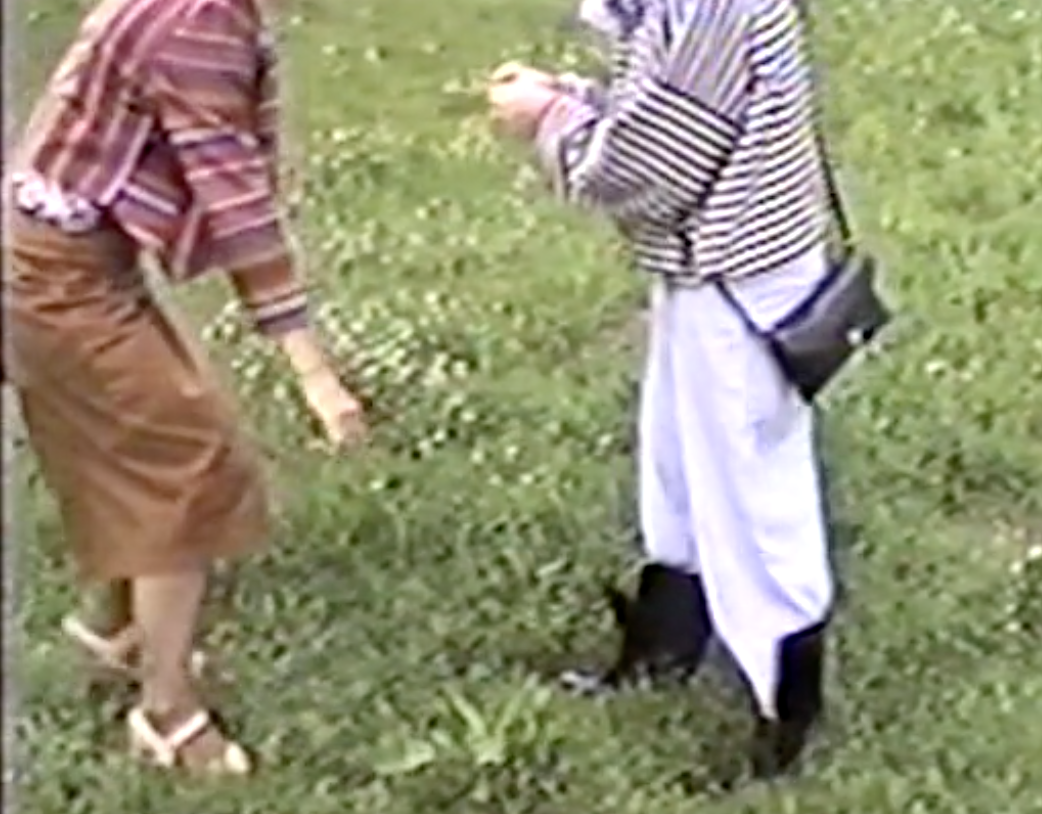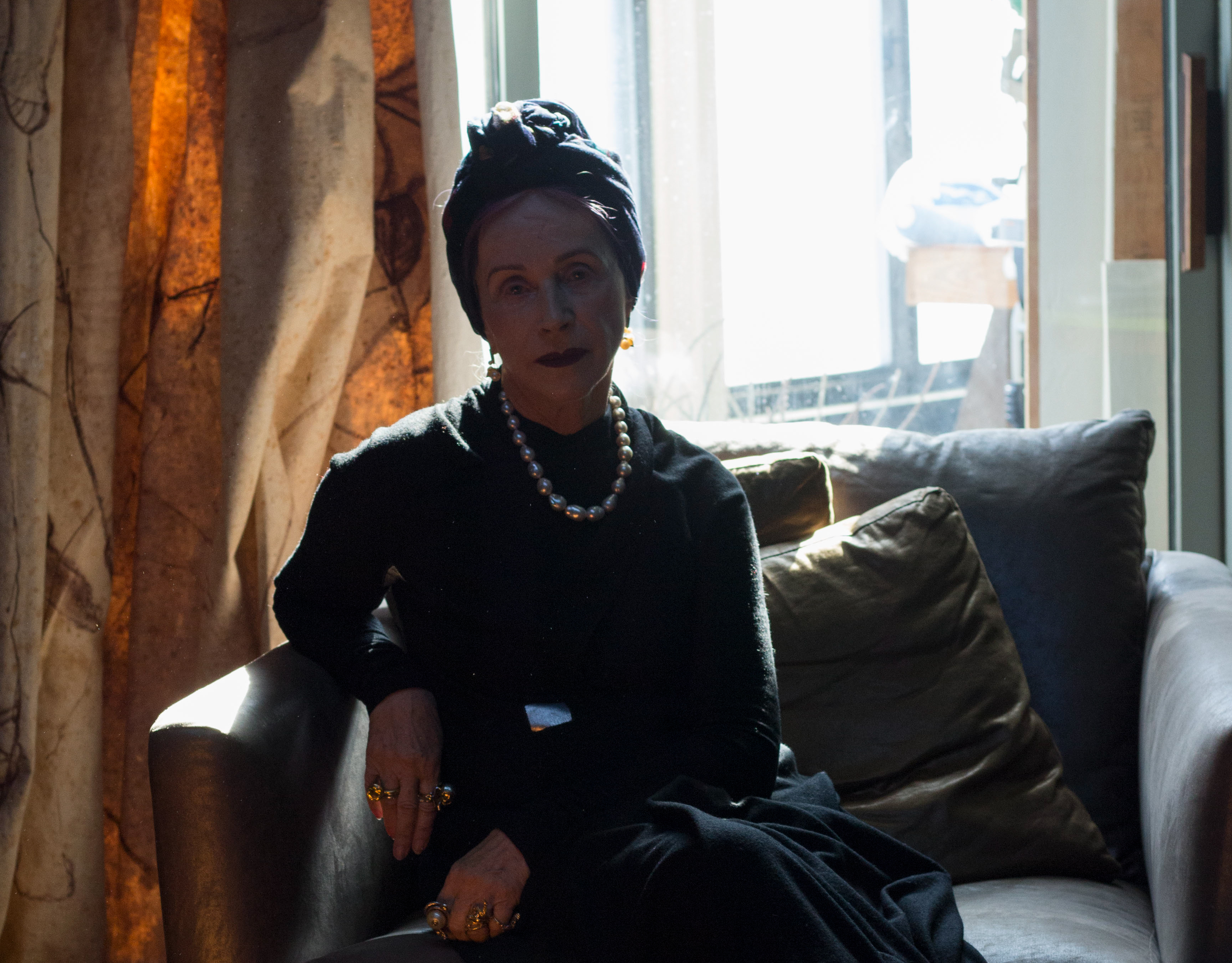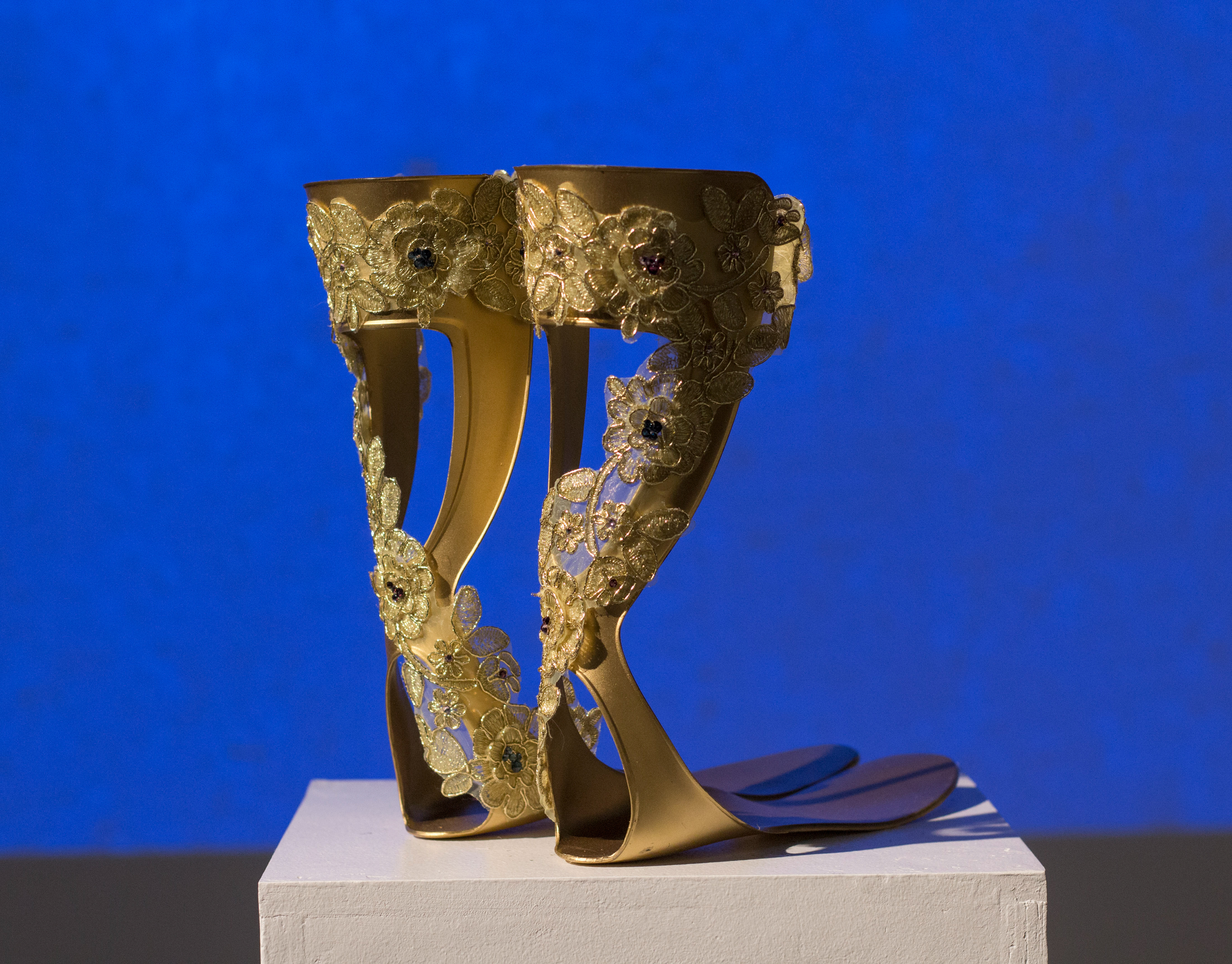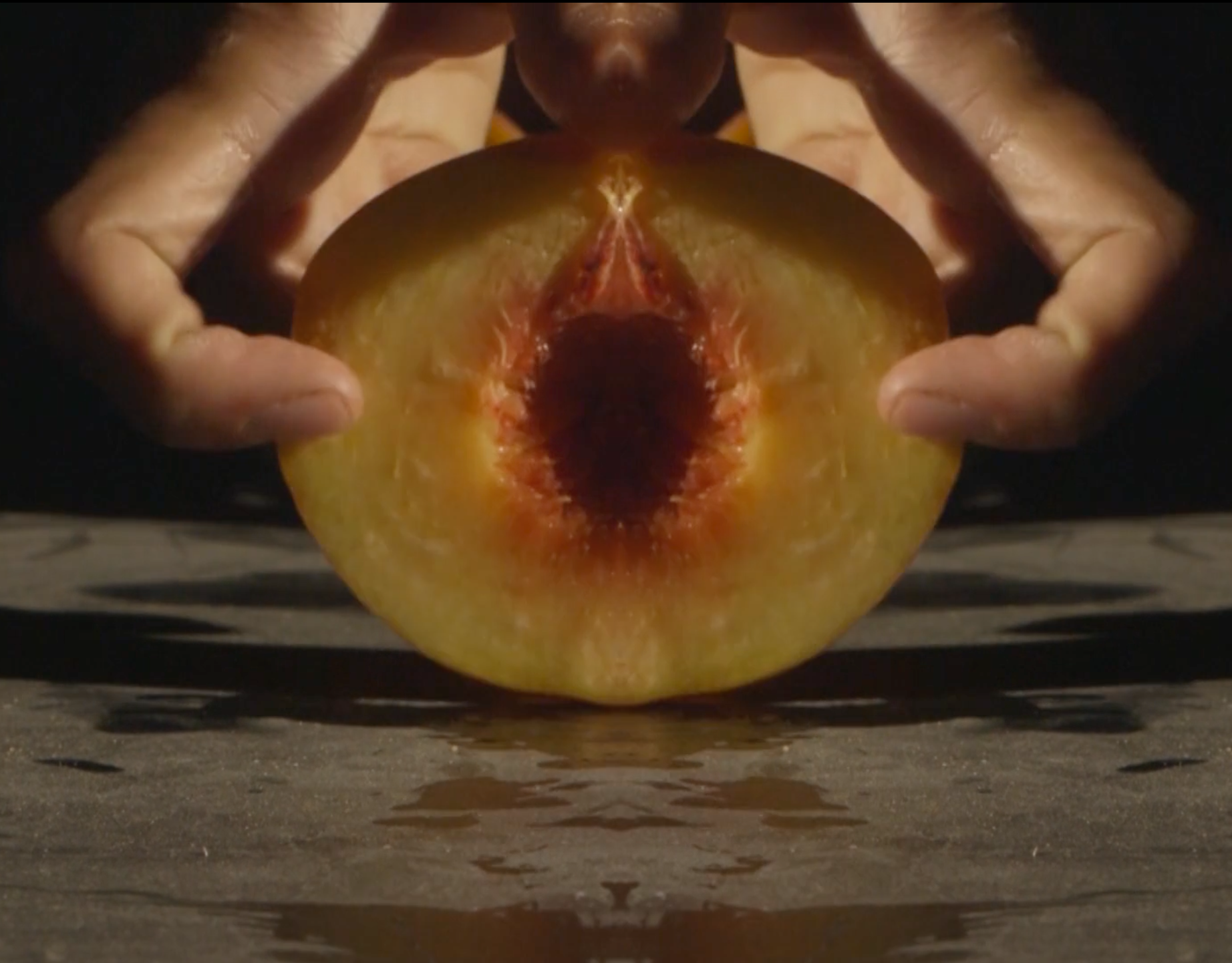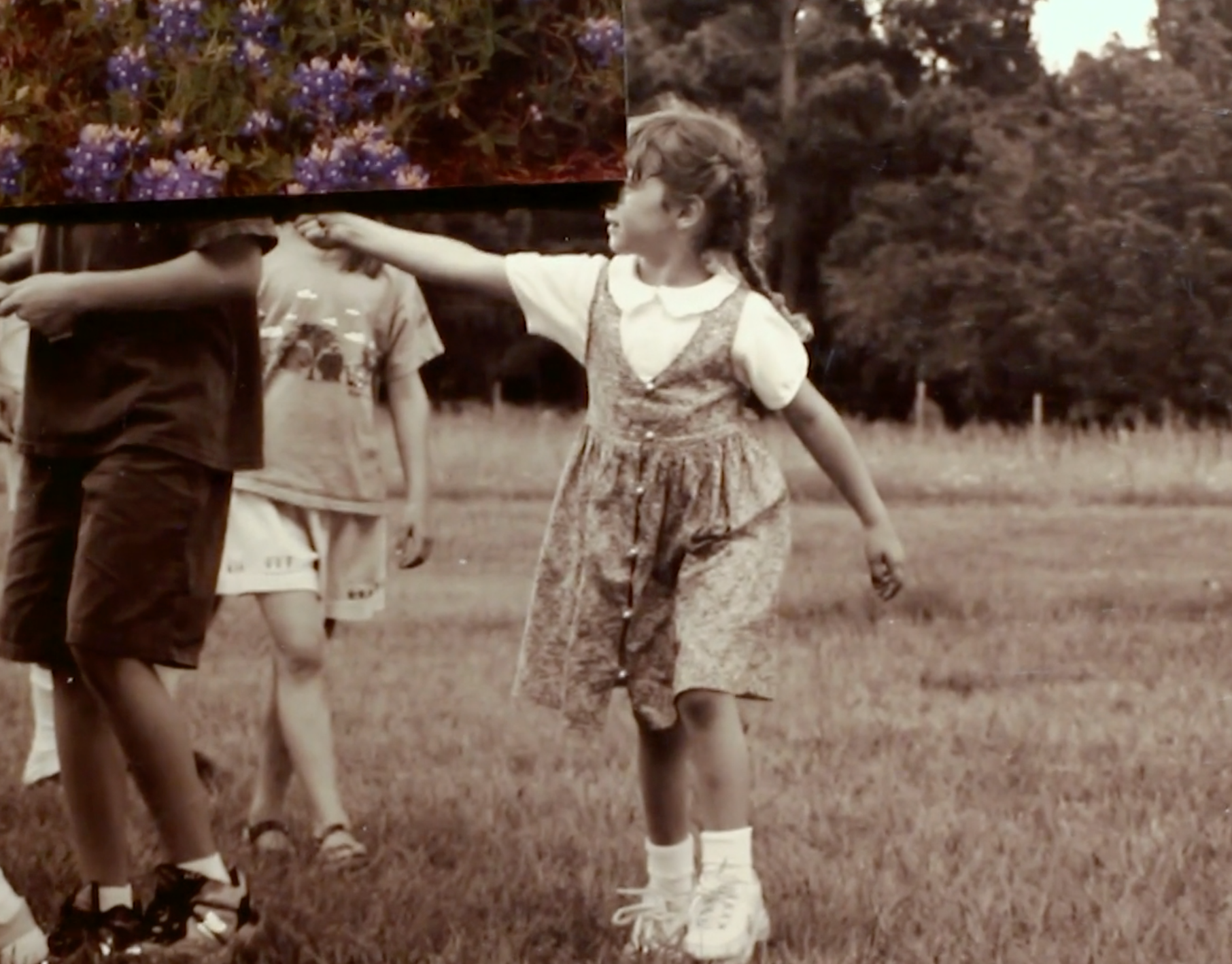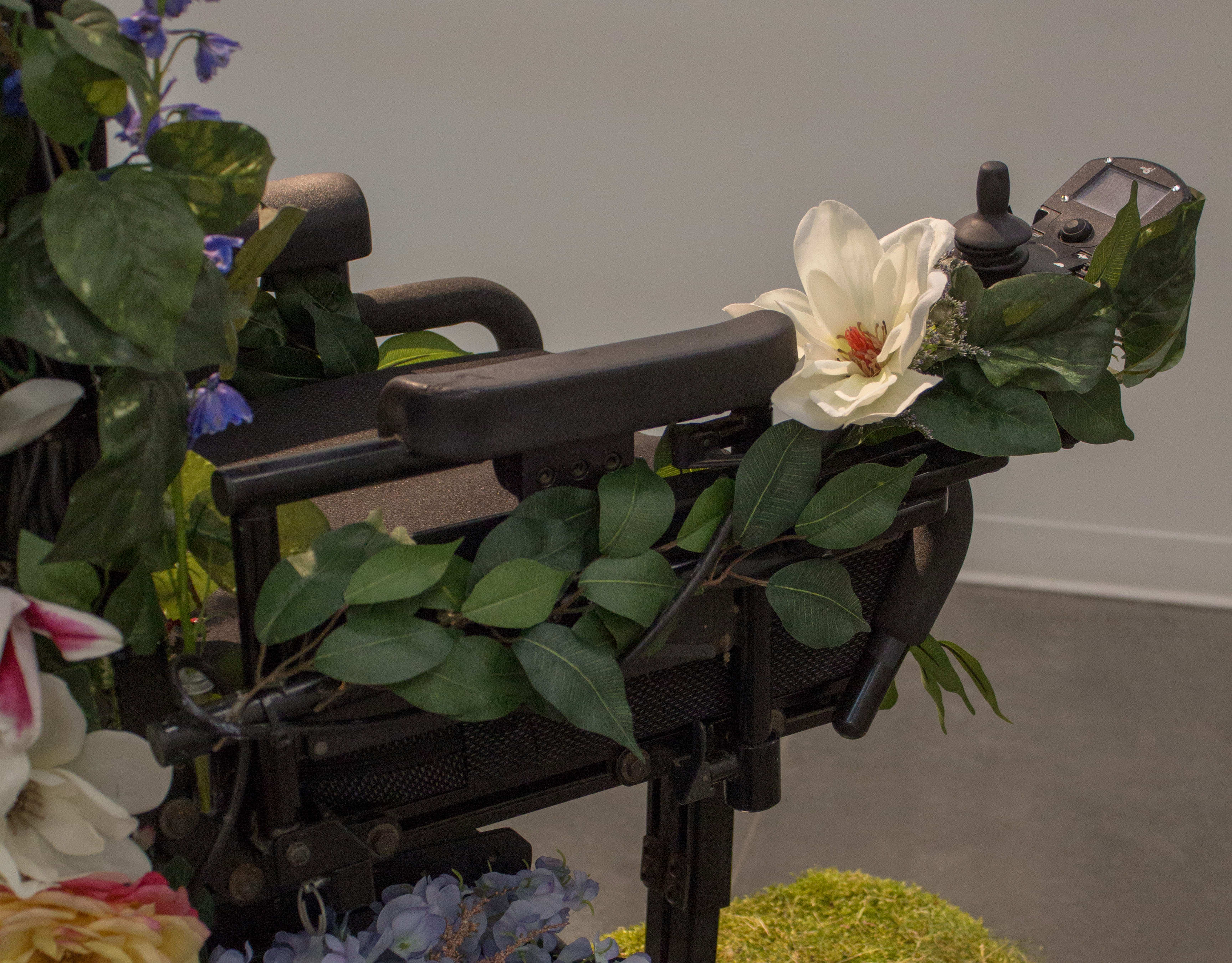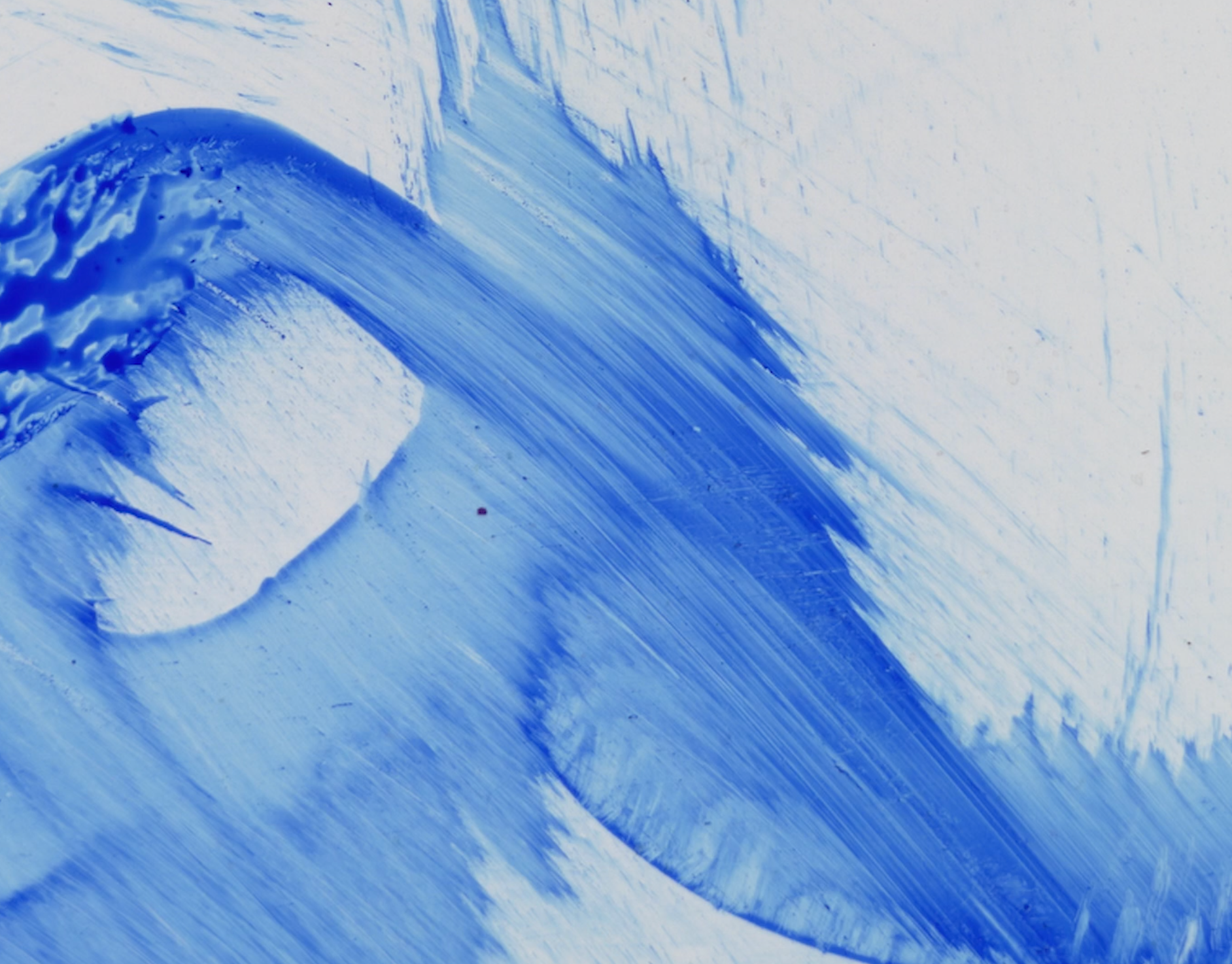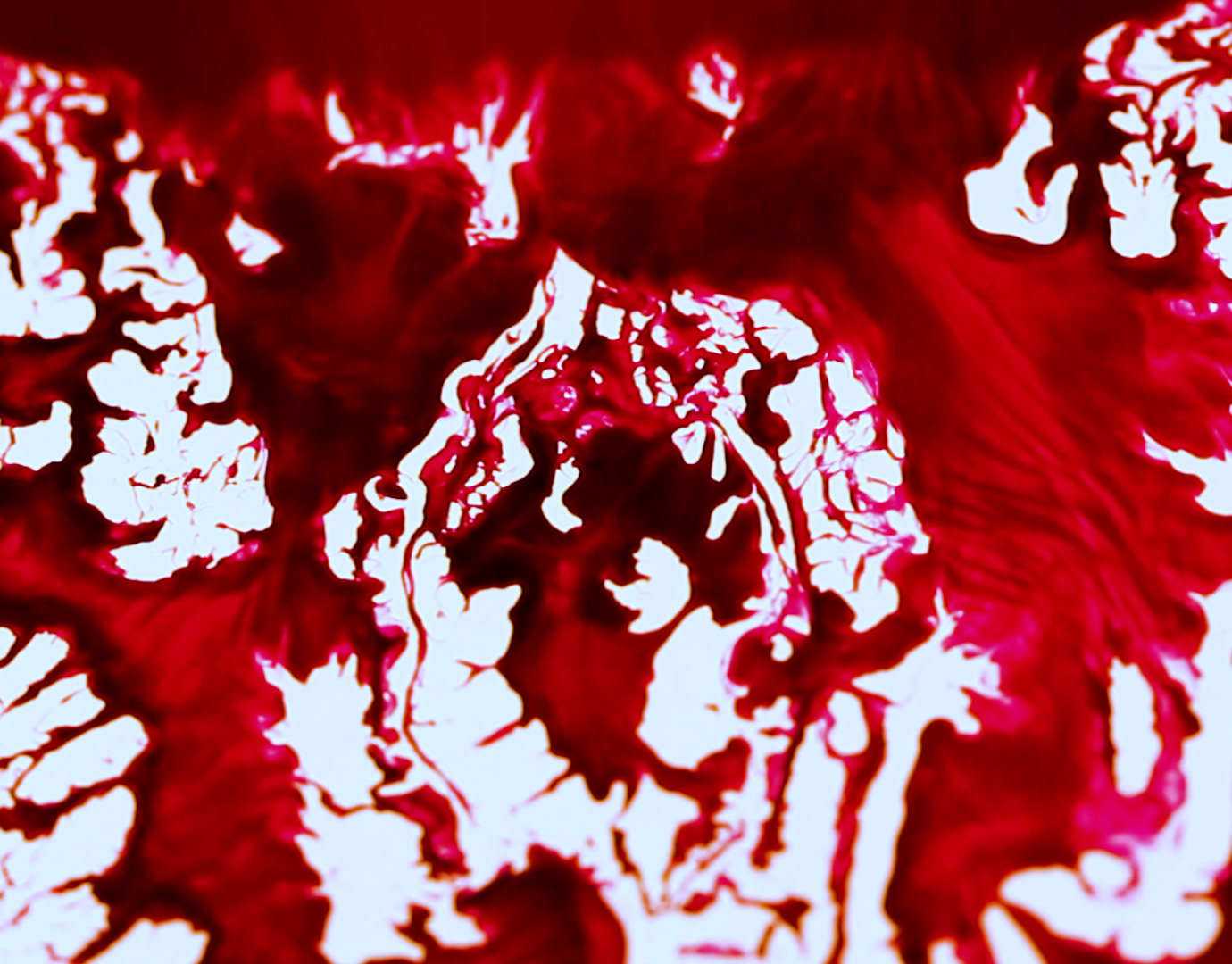Throughout my life, people have often told me, “you should be a hand model”—due to my long, slim fingers. Each time I hear it, this comment perplexes me. In part, because my hands are one of the parts of my body that are marked with disability, and at the time that I made this piece, I had personally never seen a disabled model featured anywhere. My muscle weakness prevents me from making many common gestures or holding objects in conventional ways, and my hands are thin and somewhat disfigured due to my atrophied muscles.
After hearing this comment enough times, I decided to put my disabled hands in conversation with the idea of modeling. I used my disabled hands to create a conversation with objects that symbolize beauty, femininity, and sensuality, or that harken back to imagery found in classical art. In doing so, I learned that the limp nature of my disabled hands becomes a reference to the hand gestures depicted in Renaissance-era paintings.
This work became the first in a series that explores the process of concealing and revealing aspects of one’s identity—specifically, signifiers of disability like my atrophied hands. Through exploring the images and fantasies of my own personal experiences, I began an investigation of, and a conversation with, the symbols, colors, and gestures of classical art, a place where positive representations of disability are largely absent.
